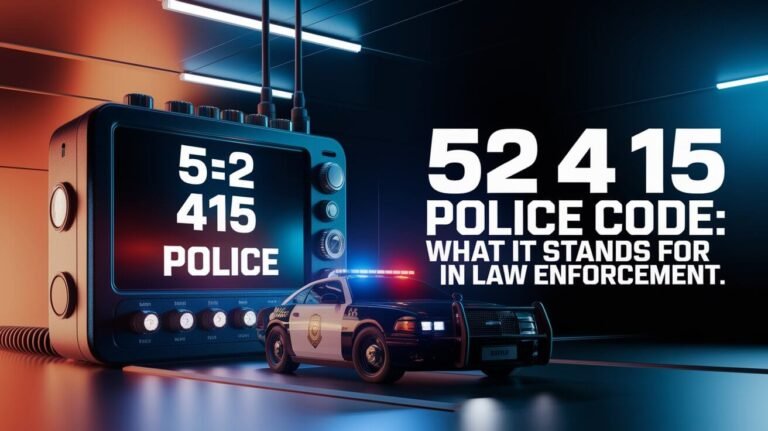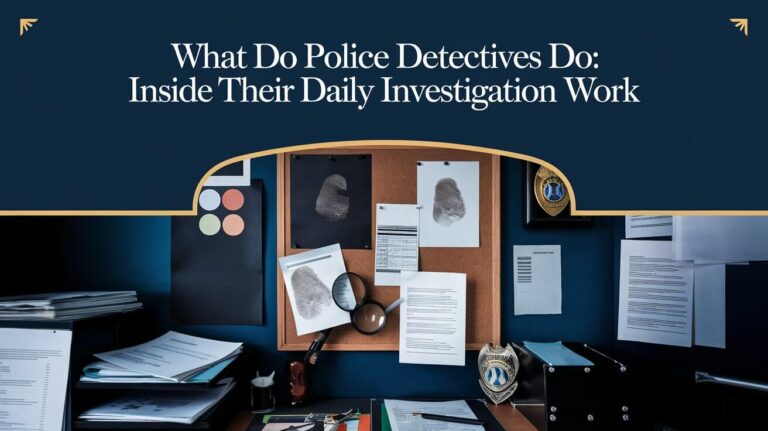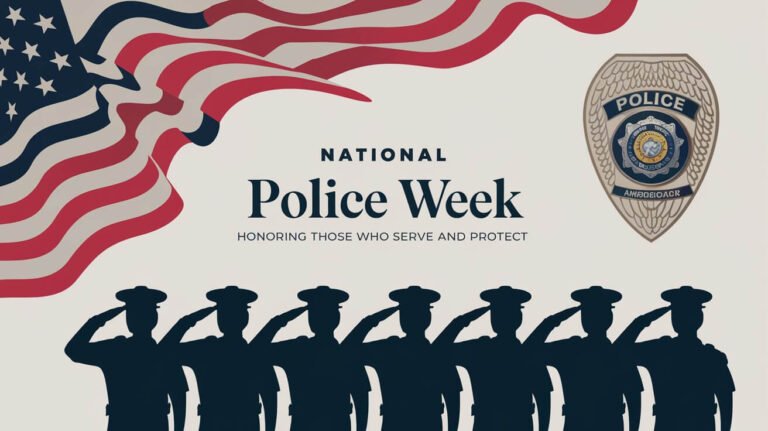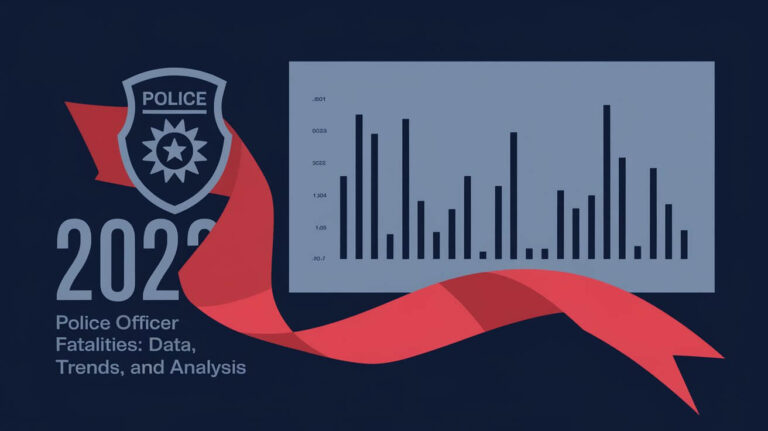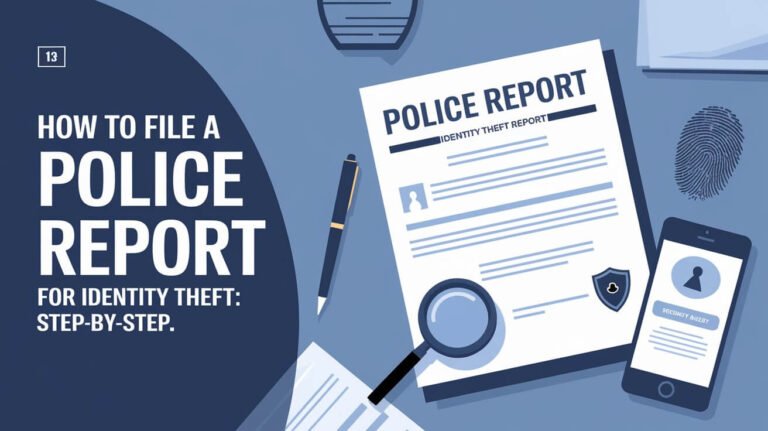How Many Police Officers In The Us: National Law Enforcement Stats
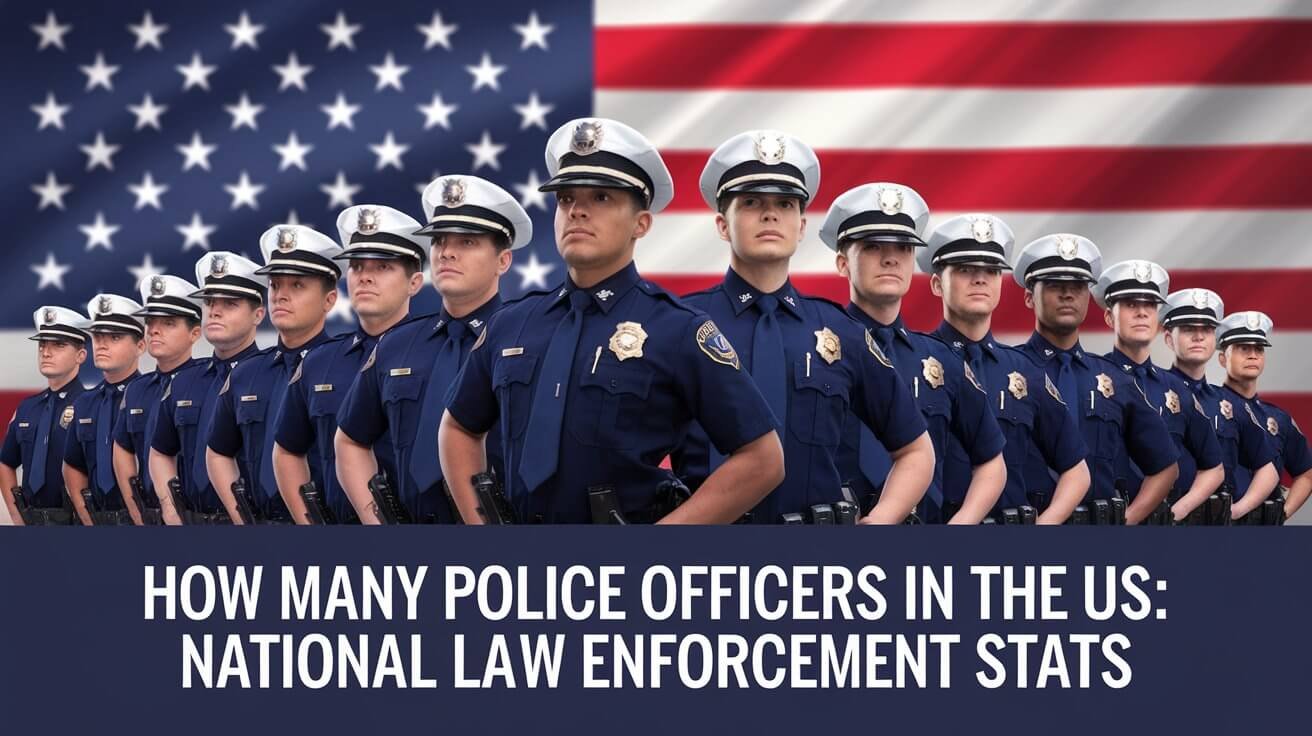
In the United States, law enforcement is key to keeping us safe. It’s important to know how many officers are out there. The number might just surprise you.
Current Total Number Of Law Enforcement Officers Nationwide
The United States has a vast and complex law enforcement landscape. It includes federal, state, and local agencies working to keep us safe. As of 2024, there are over 1.28 million sworn officers in the country.
Federal Law Enforcement Personnel Numbers
About 137,000 officers work for federal law enforcement agencies. These include famous agencies like the FBI, DEA, and U.S. Marshals Service.
State and Local Police Force Statistics
Most police department statistics come from state and local law enforcement. They employ over 930,000 people. Around 718,000 of them have the power to arrest.
Gender Distribution in Law Enforcement
The law enforcement workforce in the U.S. is mostly male. Female officers make up about 12% of the total police staffing levels. There are efforts to balance the gender and increase diversity in the profession.
Law Enforcement Agency Types Across America
The United States has many law enforcement agencies at different levels. These include police agencies, law enforcement departments, and federal agencies. They all work together to keep people safe and follow the law.
At the federal level, important agencies like the FBI, DEA, and ATF are part of the Department of Justice. The Department of Homeland Security oversees the Border Patrol, ICE, and Secret Service. These agencies handle national security and enforce federal laws.
State-level agencies, such as state police and highway patrol, keep order and enforce laws in their areas. Local law enforcement, like city police and county sheriff’s offices, focus on community policing. They deal with local safety issues.
Together, these law enforcement agencies form a strong network of public safety in the United States. They make sure communities all over the country are protected and served.
State-by-State Police Force Distribution
The number of police officers in the U.S. changes a lot from state to state. Some places have big city police forces. Others use county sheriffs and state troopers more, mainly in rural areas.
Largest Police Departments
The New York City Police Department (NYPD) is the biggest, with over 34,000 officers. Los Angeles, Chicago, and Houston also have big police forces to keep their cities safe.
Rural vs. Urban Police Coverage
Rural areas often have fewer police, with sheriffs and state troopers covering big areas. This means police might take longer to get there. Urban policing has bigger, more specialized teams. Rural law enforcement distribution uses a more spread-out, regional way.
| State | Total Police Officers | Police Officers per 100,000 Residents |
|---|---|---|
| California | 84,658 | 214.1 |
| Texas | 72,667 | 250.6 |
| New York | 48,688 | 250.0 |
| Florida | 40,935 | 194.6 |
| Illinois | 25,343 | 199.5 |
How Many Police Officers In The Us Changed In 2004
Full-time law enforcement officers in the United States have seen big changes. By 2023, their numbers hit a record high over 800,000. This shows how much police force trends and law enforcement growth have increased.
Police departments have grown due to the need to enforce laws better. In the early 1900s, more officers were hired, mainly in the South. This was because of Jim Crow laws.
The 14th Amendment in 1868 gave African Americans equal protection. This led to more law enforcement to keep order. But, it also meant Black people were unfairly targeted, leading to high incarceration rates.
Bias in policing and the cost of the criminal justice system, $81 billion a year, are big concerns. These issues make people question the role of police force trends and law enforcement growth. The changes in officer numbers over time show how law enforcement is changing in the U.S.
Federal Law Enforcement Agencies And Their Staff
The United States has many federal law enforcement agencies. Each one has its own job and team. They work under two main departments: the Department of Justice (DOJ) and the Department of Homeland Security (DHS).
Department of Justice Personnel
The DOJ has big agencies like the Federal Bureau of Investigation (FBI), Drug Enforcement Administration (DEA), and more. These DOJ agencies have a lot of federal law enforcement officers.
Department of Homeland Security Officers
The DHS has agencies like U.S. Customs and Border Protection (CBP) and U.S. Immigration and Customs Enforcement (ICE). These DHS officers help keep the country safe by watching borders and protecting important places.
Other Federal Agency Officers
There are also other federal agencies with their own police teams. For example, the National Park Service and Inspector General offices. The federal government has about 137,000 federal law enforcement officers to keep the peace and protect everyone.
| Agency | Number of Officers |
|---|---|
| U.S. Customs and Border Protection (CBP) | 46,993 |
| Federal Bureau of Prisons | 19,130 |
| Federal Bureau of Investigation (FBI) | 13,490 |
| U.S. Immigration and Customs Enforcement (ICE) | 12,495 |
| U.S. Marshals Service | 5,852 |
Police Officers Per Capita Analysis
The number of police officers per capita changes a lot in different places in the United States. Cities usually have more police than rural areas. This helps us understand how well communities are protected and how fast help can arrive.
Louisiana, New Mexico, and North Dakota have the most police officers per 1,000 people. Louisiana has the most police for its population, followed by New Mexico, North Dakota, and New York.
Between 2012 and 2021, the U.S. lost about 10,000 police officers. But, the number of police per person didn’t drop much. It only went down by 1% in ten years.
Places with a lot of crime, like Louisiana and New Mexico, have more police. But, states with less crime, like Utah and Maine, have fewer police officers.
Police salaries vary a lot across the country. Most states (36 and Washington D.C.) pay police more than the average worker. But, 15 states pay them less. Things like overtime and living costs affect how much police earn in different places.
Police Department Staffing Challenges
Law enforcement agencies in the U.S. are struggling with staffing issues. These problems affect both hiring new officers and keeping current ones. Despite some progress, many departments find it hard to have enough people, mainly in big cities.
Recruitment Trends
In 2024, there were 151,335 sworn officers in the U.S. This is a 0.4% increase from the year before. But, it’s 4.9% less than in 2020 before the pandemic. Agencies hired more officers in 2023 than in 2020 or 2019, but the issue is big.
Retention Statistics
More officers are leaving their jobs, with a 2.5% increase from 2019 to 2020. Then, resignations jumped almost 40% in 2021 and another 14% in 2022. But, in 2023, resignations dropped by 21.6%, though they were 28.6% higher than in 2019.
Retirements have also been a problem, with a nearly 30% increase from 2019 to 2020. Then, there was a decrease of more than 5% in 2021 and an increase of almost 8% in 2022. In 2023, retirements went down by almost 24%, but were about 1% higher than in 2019.
The data shows some progress in hiring and keeping officers. But, police departments, big and small, face big challenges. Smaller departments with fewer than 50 officers have even more problems with resignations and retirements.
Regional Distribution Of Law Enforcement Personnel
The way law enforcement is spread out in the United States changes a lot by region. This is because of things like how many people live there, crime rates, and how places are run. Most police and sheriff’s officers work for state and local agencies. Their numbers depend on how urban an area is, state policies, and what the community needs.
There are over 15,000 police and sheriff’s departments in the country. They have more than 750,000 sworn officers. Interestingly, just over 60% of these officers work in departments with 100 or more personnel. This shows how law enforcement resources are spread out differently across regions.
A Pew Research Center survey of nearly 8,000 officers from bigger departments gives us some key insights. It shows that officers in smaller agencies are happier with their management. They also feel their opinions are heard more than those in big cities.
| Police Department Size | Officer Satisfaction with Management | Officer Input Valued |
|---|---|---|
| Less than 1,000 officers | 39% extremely/very satisfied | 92% say input is sought |
| 1,000 or more officers | 20% extremely/very satisfied | 73% say input is sought |
This shows the complex regional policing in the United States. Police force allocation is influenced by many factors. These include demographics, how agencies are set up, and what the community wants.
Specialized Police Units And Their Numbers
Many police departments in the U.S. have special units for different needs. These include SWAT teams, K-9 units, detective divisions, and cybercrime units. The size of these units varies based on the department’s size and local challenges.
SWAT teams handle high-risk situations like hostage cases and active shooters. Not all departments have SWAT teams, but big cities usually do. For example, the NYPD has over 500 officers in its Emergency Service Unit.
K-9 units use trained dogs for tasks like finding drugs and helping in searches. The LAPD has over 100 police dogs. The California Highway Patrol has a statewide K-9 force of over 80 officers and dogs.
Commonly Asked Questions
How many police officers are there in the United States?
As of 2024, over 1,280,000 sworn law enforcement officers serve in the United States.
How many federal law enforcement officers are there in the U.S.?
About 137,000 federal law enforcement officers work for various federal agencies in the United States.
How many law enforcement agencies are there in the United States?
The United States has 17,985 police agencies. These include local police departments, county sheriff’s offices, state troopers, and federal law enforcement agencies.
What is the gender distribution of law enforcement officers in the U.S.?
Female officers make up about 12% of the total law enforcement workforce in the United States.
What types of law enforcement agencies operate in the United States?
The United States has different types of law enforcement agencies. These operate at various levels, including federal, state, and local.
How is the police force distributed across different states in the U.S.?
Police force distribution varies across states. Urban areas have larger police departments. Rural regions often rely on county sheriff’s offices or state troopers.
How has the total number of law enforcement officers in the U.S. changed?
The number of full-time law enforcement officers in the United States has changed. As of 2023, it has reached over 800,000, the highest ever.
Which federal agencies employ the most law enforcement officers?
The Department of Justice oversees major federal law enforcement agencies like the FBI, DEA, ATF, and U.S. Marshals Service. The Department of Homeland Security manages agencies such as the Border Patrol, ICE, Secret Service, and Coast Guard.
What is the ratio of police officers to population in the United States?
The ratio of police officers to population varies across different regions. Urban areas generally have a higher concentration of officers per capita than rural areas.
What challenges are police departments facing in terms of staffing?
Police departments face staffing challenges. Issues include recruitment and retention of experienced officers. These challenges are due to public perception and competitive job markets.
How is law enforcement personnel distributed across different regions in the U.S.?
Law enforcement personnel distribution varies by region. It reflects population density, crime rates, and local governance structures. Some regions have more federal officers due to border proximity or federal facilities.
What types of specialized units do police departments maintain?
Many police departments have specialized units. These include SWAT teams, K-9 units, detective divisions, and cybercrime units. The number and size of these units vary based on department size and community needs.

